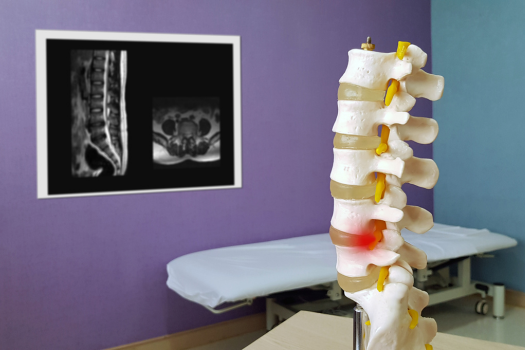
Herniated discs are a common condition that affects people of various age groups. However, many individuals wonder at what age they typically start to become a concern. This article explores the age range when herniated discs are more likely to occur, the factors influencing their onset, and strategies to prevent or manage them effectively.
Understanding Herniated Discs
Before addressing the age-related aspect, it is important to understand what herniated discs are. The spine is composed of small, cushion-like discs that act as shock absorbers between the vertebrae and allow your spine to bend and twist. However, sometimes these discs can get damaged or worn out due to aging, injury, or disease. When this happens, the inner part of the disc (the nucleus) can bulge out through a tear in the outer layer (the annulus). This is called a herniated disc, also known as a slipped disc or ruptured disc.
A herniated disc can press on nearby nerves or the spinal cord, causing pain, numbness, tingling, or weakness in the affected area. Depending the location of the herniated disc, it can affect different parts of the body. For example, a herniated disc in the lower back can cause sciatica, which is pain that radiates down the leg, while a herniated disc in the neck can cause pain in the shoulder, arm, or hand.
The Age Connection
Factors Influencing Herniated Disc Onset
While age plays a role in the onset of herniated discs, other factors can contribute to their development as well. These include:- Lifestyle and occupation – Certain professions that involve heavy lifting, repetitive motions, or prolonged sitting can put excessive strain on the spine, increasing the risk of disc herniation.
- Genetics – Some individuals may have an inherited predisposition to disc problems, making them more susceptible to herniation at an earlier age.
- Weight – Excess weight places additional stress on the spine, potentially accelerating the degeneration of discs and making them more prone to herniation.
- Smoking – Smoking can impair the body's ability to deliver nutrients and oxygen to spinal discs, contributing to their degeneration and increasing the likelihood of herniation.
- Injury – Trauma to the spine, such as from a fall, car accident, or sports injury, can cause a sudden or gradual herniation of a disc.
Preventing and Managing Herniated Discs
- Regular exercise – Engaging in low-impact exercises, such as swimming or walking, strengthens the muscles that support the spine and increases overall flexibility.
- Stretching frequently – Stretch your neck, back, and legs throughout the day, especially if you sit for long periods of time.
- Proper lifting techniques – When lifting heavy objects, it is crucial to use your legs rather than your back to minimize strain on your spinal discs.
- Maintaining good posture – Practicing proper posture throughout the day, especially while sitting or standing for extended periods, can reduce stress on the spine and discs.
- Weight management – Maintaining a healthy weight reduces the burden on the spine and minimizes the risk of herniation.
- Seeking medical guidance – If you are experiencing persistent back pain or related symptoms, consult a healthcare professional for an accurate diagnosis and appropriate treatment options.
Treatment Options for Herniated Discs
- Rest – You may need to limit or avoid activities that worsen your pain for a short time.
- Medication – Over-the-counter pain relievers, such as acetaminophen, ibuprofen, and naproxen, can reduce inflammation and pain. Your doctor may also prescribe stronger painkillers or nerve pain medications if needed.
- Physical therapy – A physical therapist can teach you exercises to strengthen your core muscles, improve your posture, and increase your flexibility. This can relieve pressure on your spine and nerves.
- Injections – Your doctor may inject steroids or numbing agents into or near your spine to reduce inflammation and pain.
If conservative methods do not relieve the pain from a herniated disc, treatment recommendations may include a discectomy or a less invasive microdiscectomy. Although this is generally a very successful procedure, patients with a large hole in the outer ring of the disc have a significantly higher risk of reherniation following surgery. Often, the surgeon will not know the size of the hole until beginning surgery, and having a large hole in the outer ring of the disc more than doubles the risk of needing another operation. A new treatment, Barricaid, is a bone-anchored device that closes this hole, and 95 percent of Barricaid patients did not undergo a reoperation due to reherniation in a 2-year study timeframe. This treatment is done immediately following the discectomy—during the same operation—and does not require any additional incisions or time in the hospital.
If you have any questions about the Barricaid treatment, ask your doctor or contact us at 844-288-7474.
For full benefit/risk information, please visit: https://www.barricaid.com/instructions.


Comments